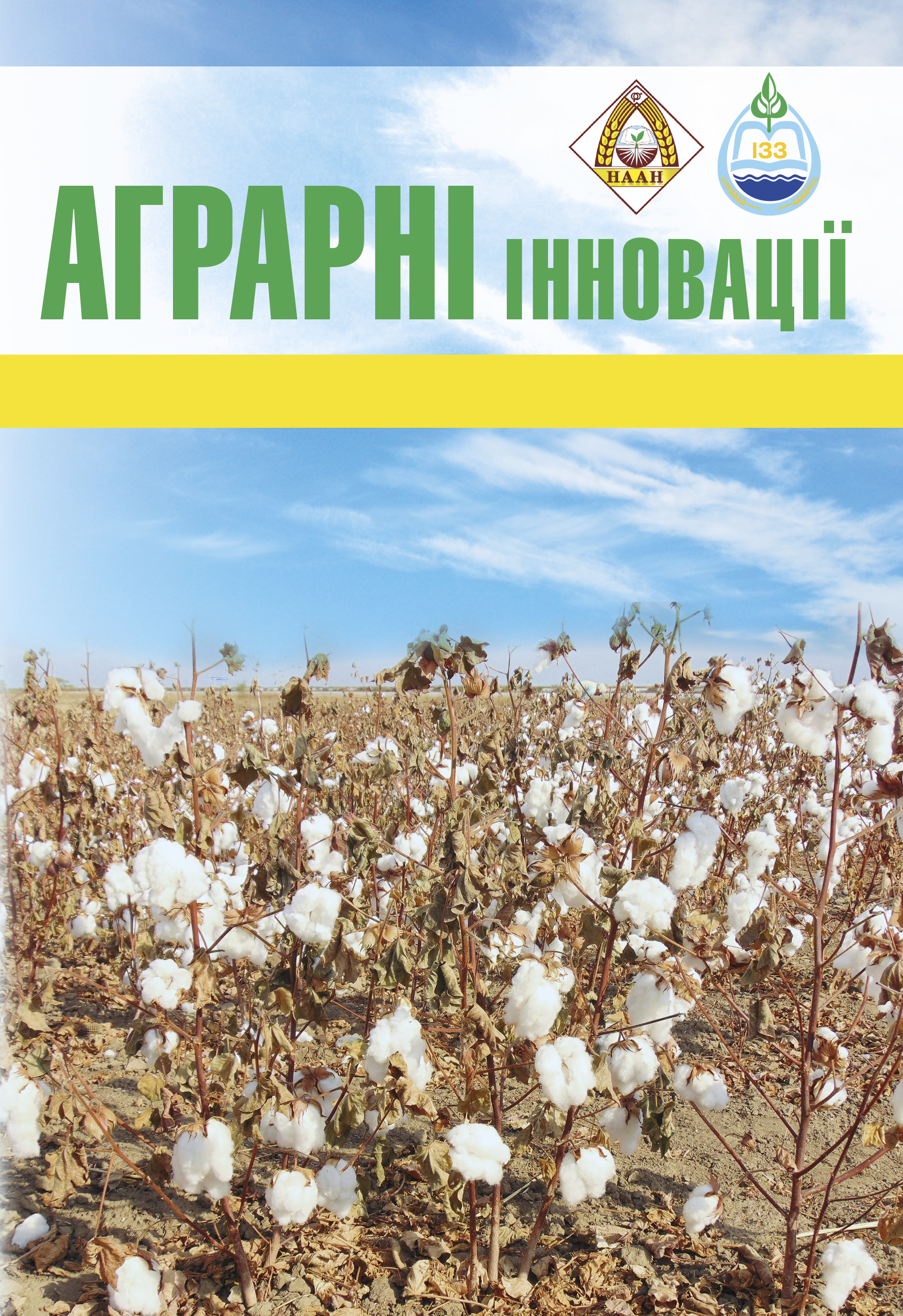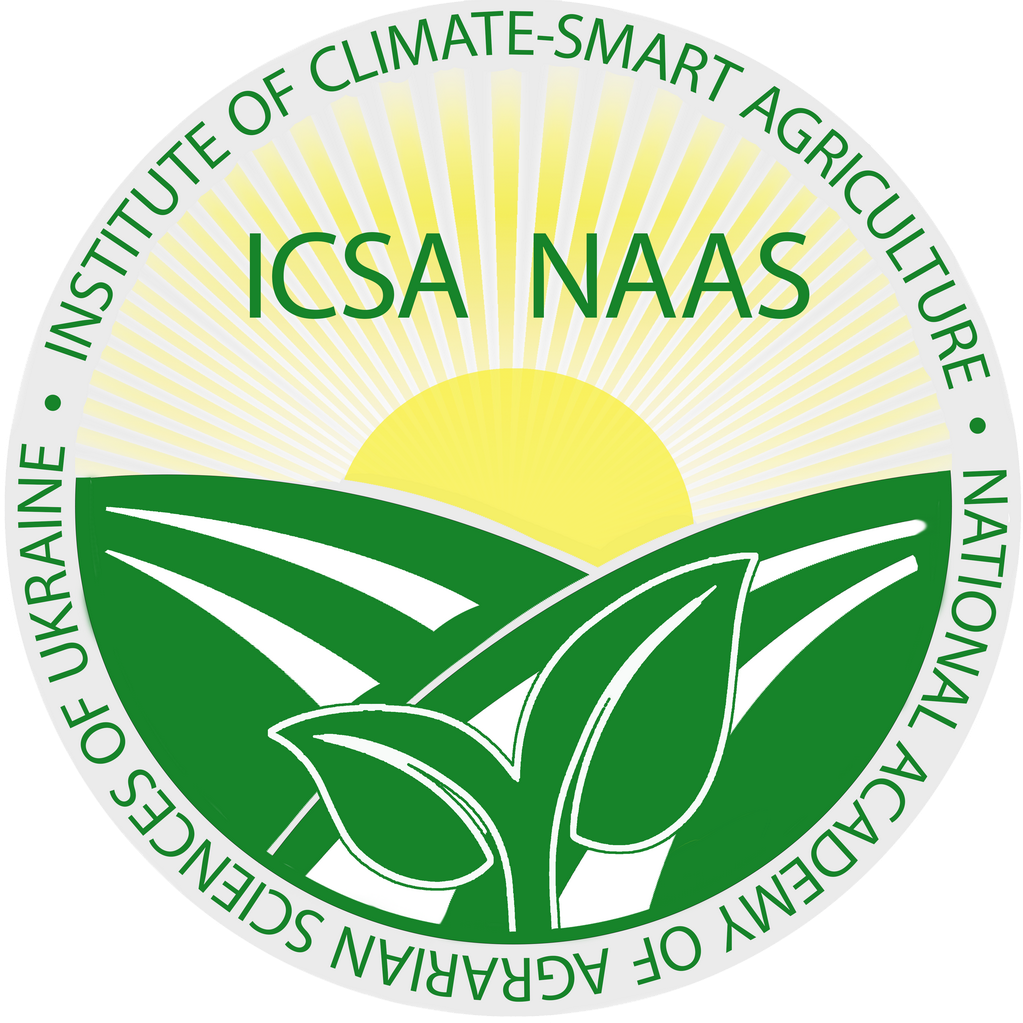Field germination of winter wheat seeds depending on varietal characteristics, sowing rates and biological products
Abstract
Purpose. The purpose of the research was to study the effect of a plant growth stimulant and a mycorrhizal preparation at different sowing rates of winter wheat seeds on field germination in the conditions of the Right-Bank Forest-Steppe of Ukraine. Methods. The research was conducted during 2022–2025 in the conditions of the Educational and Production Center of the Bila Tserkva National Agrarian University (BNAU) – the zone of the Right-Bank Forest-Steppe of Ukraine. The soil type was typical black soil. The experiment was three-factorial: factor A – variety, factor B – sowing rate, factor C – application of biological products (pre-sowing treatment of seeds, crops). The experiment was set up using the method of systematic repetitions: in each repetition, the experiment variants were placed in the plots sequentially. The repeatability of the experiments was fourfold. Pre-sowing seed treatment was carried out by the method of wet inoculation.Results. It was established that meteorological conditions had a significant impact on the emergence and initial growth of winter wheat plants. The duration of the autumn vegetation period in 2022 was 56 days, with 173 mm of precipitation, in 2024 – 52 days and 131 mm of precipitation. A small amount of precipitation (97 mm) and a shorter autumn vegetation period (49 days) were observed in 2023. It was studied that pre-sowing seed treatment with the mycorrhizal preparation Mycofriend increased the germination energy of the studied varieties by 2.1–2.9%, and with the growth stimulator Agrostimulin by 2.4–3.7%. Laboratory germination increased in the Lisova Pisnya variety with the use of Mycofriend by 2%, with the use of Agrostimulin by 2.6%. In the Zorya Laniv variety, by 1.2 and 1.3%, respectively. It was found that seed treatment with protective and stimulating preparations provided higher field germination rates compared to the control in all variants of the experiment. Conclusions. The use of the mycorrhizal preparation Mycofriend and the plant growth stimulator Agrostimulin provides an increase in laboratory and field germination of winter wheat seeds. The optimal seeding rate in the experiment was set at 5.0 and 5.5 million seeds/ha, since the field germination rates were the highest in these variants. According to the analysis of variance, it was investigated that not only seed treatment with protective and stimulating preparations had a significant impact on field germination of seeds – 21.3%, but also weather conditions – 19.4%.
References
2. Zecevic V., Boskovic J., Knezevic D., Micanovic D. Effect of seeding rate on grain quality of winter wheat. Chilean journal of agricultural research. 2014. № 74. P. 23–28. http://dx.doi.org/10.4067/S0718-58392014000100004
3. Юрченко С.О., Палазюк Б.О., Білокінь А.В. Вплив мікоризного препарату на урожайність пшениці м’якої озимої (Triticum aestivum L.). Таврійський науковий вісник. 2024. Вип. 139. Ч. 2. С. 190–197. https://doi.org/10.32782/2226-0099.2024.139.2.23
4. Cecchetti D., Pawełek А., Wyszkowska J.,A ntoszewski M., Szmidt-Jaworska A. Treatment of Winter Wheat (Triticum aestivum L.) Seeds with Electromagnetic Field Influences Germination and Phytohormone Balance Depending on Seed Size. Agronomy. 2022. Vol. 12(6). Р. 1423. https://doi.org/10.3390/agronomy12061423
5. Shewry P.R., Hey S.J. The contribution of wheat to human diet and health. Food Energy Secur. 2015. Vol. 4 (3). P. 178–202. https://doi.org/10.1002/fes3.64
6. Климишена Р.І. Польова схожість та виживання рос- лин озимого пивоварного ячменю залежно від внесених мінеральних добрив та норм висіву насіння. Збірник наукових праць Інституту біоенергетичних культур і цукрових буряків. 2012. Вип. 14. С. 71–73.
7. Рожков А.О., Рижик Т.В. Вплив строків сівби та норм висіву на польову схожість і виживаність пшениці озимої. Селекція і насінництво. 2018. Вип. 113. С. 218–227. https://doi.org/10.30835/2413-7510.2018.134385
8. Черенков А. В., Козечко В. І., Козельський О. М. Продуктивність пшениці озимої після ріпаку ярого в умовах північного Степу України. Бюллетень Інституту сільського господарства Степової зони НААН України. 2012. № 3. С. 3–7.
9. Свинар М.М. Залежність польової схожості та загаль- ного виживання рослин пшениці озимої залежно від впливу добрив та норм висіву насіння. Таврійський науковий вісник. 2024. №138. С. 154–158. DOI https://doi.org/10.32782/2226-0099.2024.138.19
10. Герман М.М. Поліпшення посівних якостей насіння пшениці м’якої озимої залежно від передпосівної обробки насіння. Вісник Полтавської державної аграрної академії. 2011. № 4. С. 54–57
11. Баган А.В., Гурба В.С. Вплив біопрепаратів на уро- жайність сортів пшениці м'якої озимої (Triticum aestivum L.). Аграрні інновації. 2025. № 29. С. 7–11. https://doi.org/10.32848/agrar.innov.2025.29.1
12. Бахмат М., Загнітко В. Енергія проростання та лабо-раторна схожість насінян гороху посівного. Innovative Development: Synthesis of Scientific Approaches in Various Fields of Research: proceedings of XV International scientific and practical conference, Tallinn, March, 20-22, 2024. Tallinn, Estonia. 2024. 173 p.
13. Адаменко Т. Зміна агрокліматичних умов та їх вплив на зернове господарство. Агроном. 2006. № 3. С. 12–15.
14. Ieremenko O., Kalіtka V. Productivity of Sunflower Hybrids (Helianthus Annuus L.) Under The Effect of AKM Plant Growth Regulator In The Conditions Low Moisture of Southern Steppe of Ukraine. Journal of Agriculture and Veterinary Science. Vol. 9, Iss. 9. P. 59–64. https://doi.org/10.9790/2380-0909015964

This work is licensed under a Creative Commons Attribution 4.0 International License.






